Conventional breakbulk refrigerator ships remembered
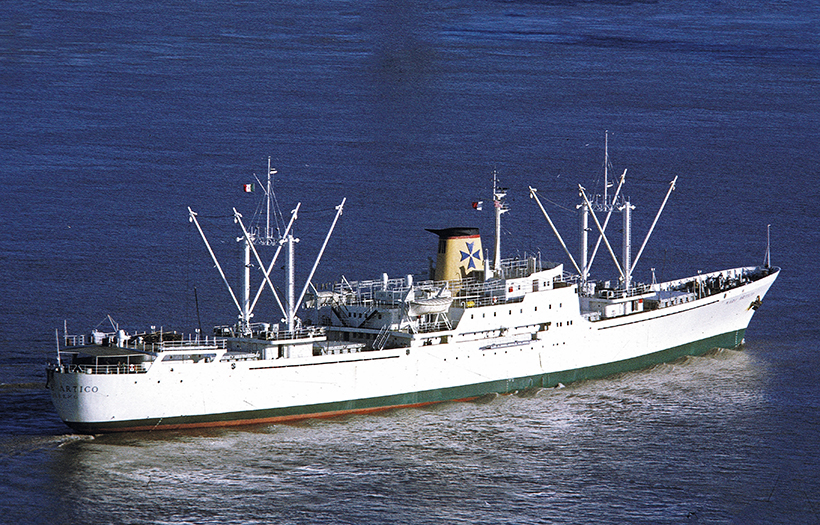
Posted by Chris Graham on 20th June 2022
Jim Shaw takes a nostalgic look back at conventional breakbulk refrigerator ships, a type of vessel that’s now all but disappeared.
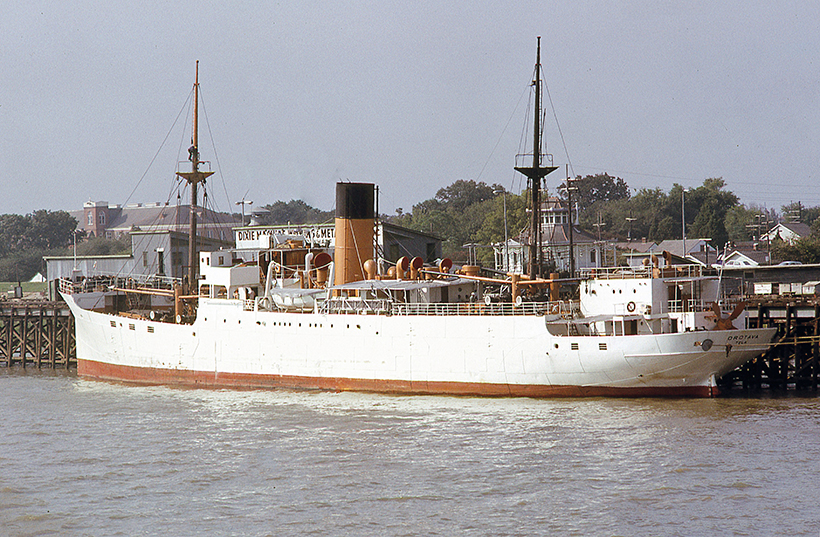
An example of a 1920s-built ‘banana boat’, the 2,518grt Orotava was completed in 1927 by Alexander Stephen & Sons Ltd for Elders & Fyffes’ Canary Islands service, but was later transferred to United Fruit’s Empresa Hondurena de Vapores banner and converted from coal-firing to oil. The little steamer managed to survive World War II and continued to trade for Agencia Maritima Hondurena until broken up for scrap in 1967. (Pic: H. Stott)
The advent of the refrigerated container has taken its toll on the once large fleet of conventional refrigerator ships that formerly transported the world’s perishable cargoes. These graceful vessels, which began to take on a shape of their own in the 1920s, reached their apogee in the late 1960s, when Port Line’s massive Port Chalmers and Port Caroline were built and entered service.
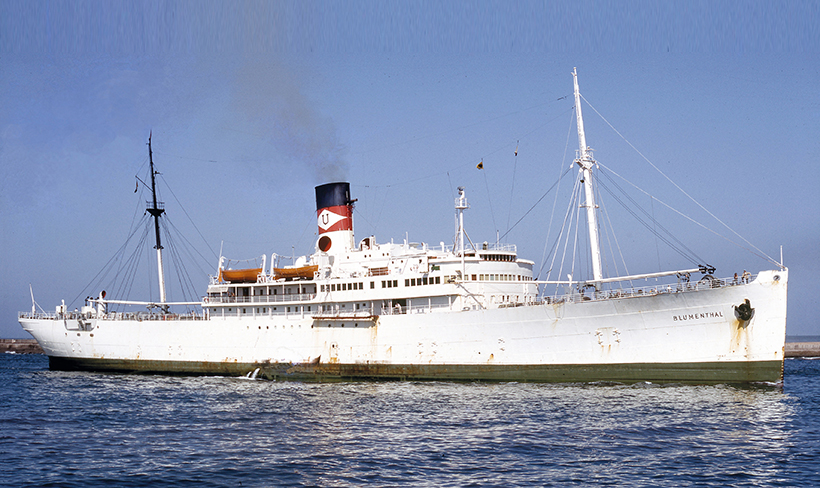
A 1930s vintage ship, the 6,698grt Blumenthal, owned by Germany’s Scipio & Co, was completed by Newport News Shipbuilding in Virginia as Peten for the United Fruit Company in 1933. Capable of accommodating 113 passengers, the 17.5-knot vessel was renamed Jamaica in 1937 for Elders and Fyffes service, but was converted into the US Navy stores vessel Ariel (AF-22) during 1942 for war duty. After being returned to the Jamaica name in 1947, the ship traded in the Caribbean for another decade before being sold to Scipio (Union Partreederei) in 1957, after which she was sent for demolition in 1969. (Pic: T Jones)
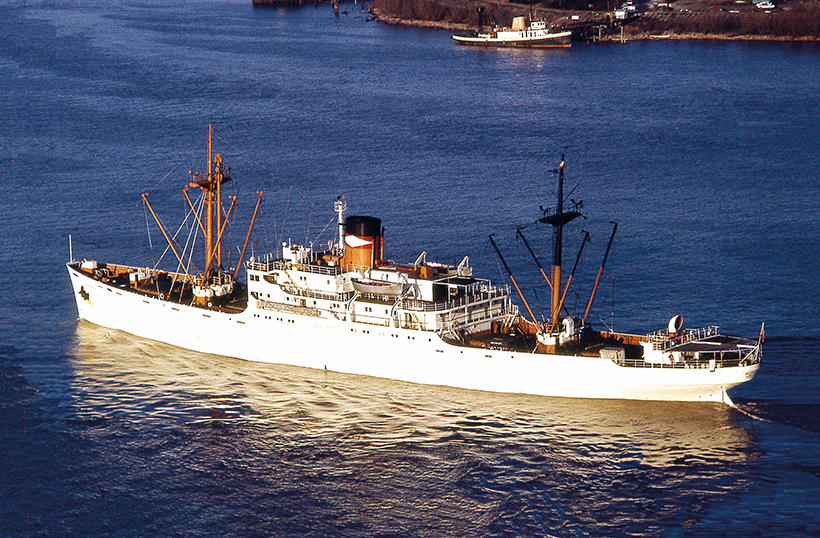
An example of early post-war-built tonnage, the 5,075grt Quisqueya was completed by the Bethlehem-Sparrows Point yard in Maryland for United Fruit in 1947 but came under the management of Holland’s Van Nievelt & Goudriaan (Caraïbische Scheepvaart Maatschappij) in 1969 as Copan. The 16.5-knot counter-stern vessel, which had four holds served by eight derricks plus a heavylift boom forward, traded for another six years before being broken up at Kaohsiung in 1975. (Pic: H Stott)
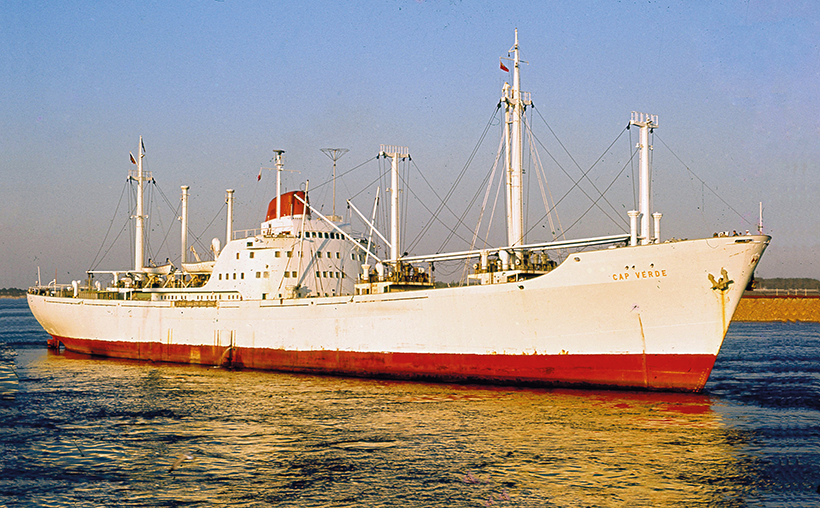
The more streamlined shape of the modern reefer was evident by 1956, when the 8,912grt Cap Verde was completed by Lübecker Flender-Werke A.G. at Lübeck for Hamburg Süd. The five-hold ship had accommodation for seven passengers plus a crew of 42. One of five sisters, she was sold to Heiner Braasch in 1969 and sailed for another decade as Hamburger Brucke and Catherine S before being broken up at Kaohsiung in 1980. (Pic: H Stott)
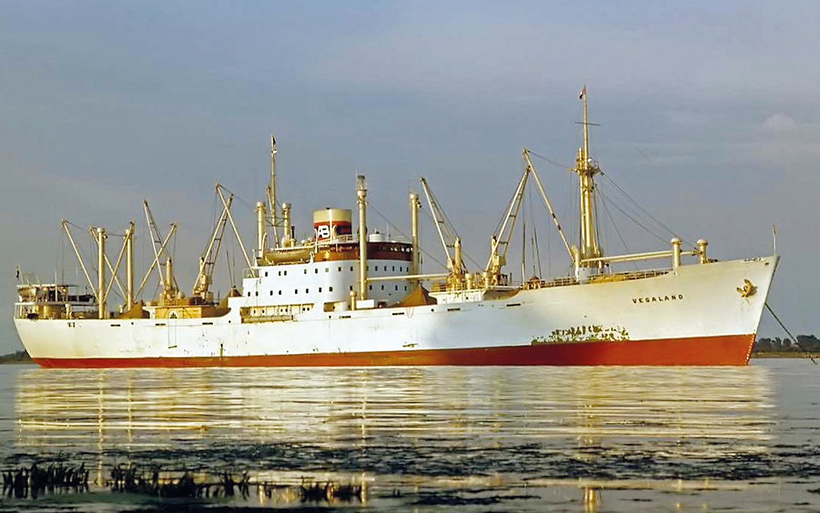
A Swedish refrigerator ship equipped with both derricks and revolving deck cranes, the 4,372grt Vegaland was completed by Eriksbergs Mekaniska Verkstad at Göteborg in 1952 for compatriot owner Ångfartygs Ab Tirfing. The ship traded for Brostoms’ Swedish Orient Line until 1968, when she was sold to Hong Kong-based Everett-Orient Line and renamed Pabloeverett. Under this name, the 16.5-knot vessel, powered by a seven-cylinder B&W main engine of 6,700hp, was broken up in 1977. (Pic: H Stott)
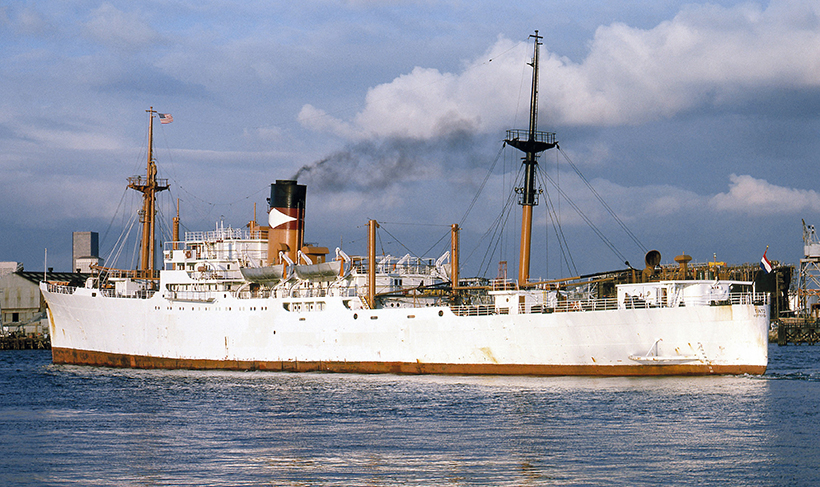
Seen under the Dutch flag, the 7,067grt Tinto had been completed by Newport News Shipbuilding in 1947 as United Fruit’s Metapan, but was transferred to Elders & Fyffes in 1970 to take up the short-lived name of Romano before being moved on to Caraïbische Scheepvaart Maatschappij (Caribbean Shipping Co), another United Fruit-associated firm, as Tinto. The white-hulled vessel, which accommodated 12 passengers, traded for another five years before being broken up at Kaohsiung in 1975. (Pic: R THORSTEINSEN)
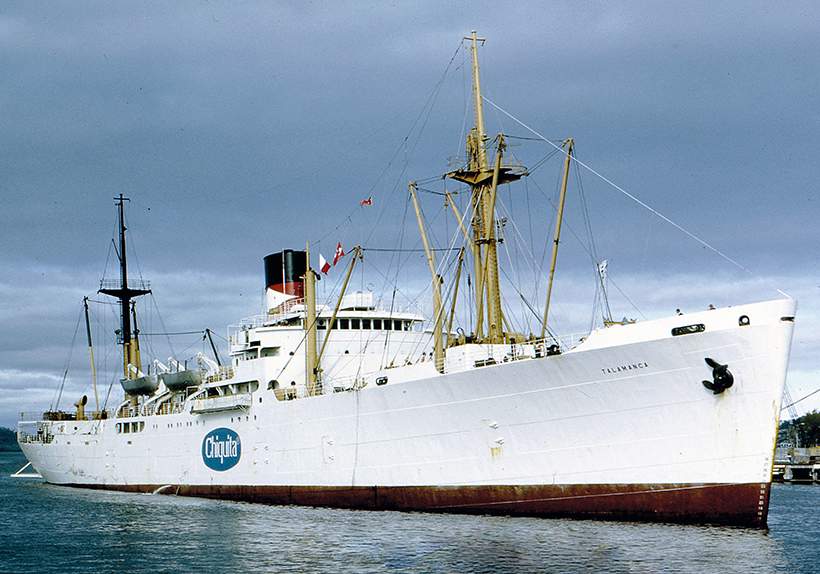
Carrying the profile of a classic banana ship, and with the ‘Chiquita’ emblem on her side, the 6,729grt Talamanca was built by the Gulf Shipbuilding Corporation as Limon for United Fruit in 1945, but went under the Dutch flag (Van Nievelt & Goudriaan & Co) as Talamanca in 1970. Wide propeller guards are carried at stern as, despite its narrow 61ft beam, the vessel was twin-shafted. (Pic: DK Collection)
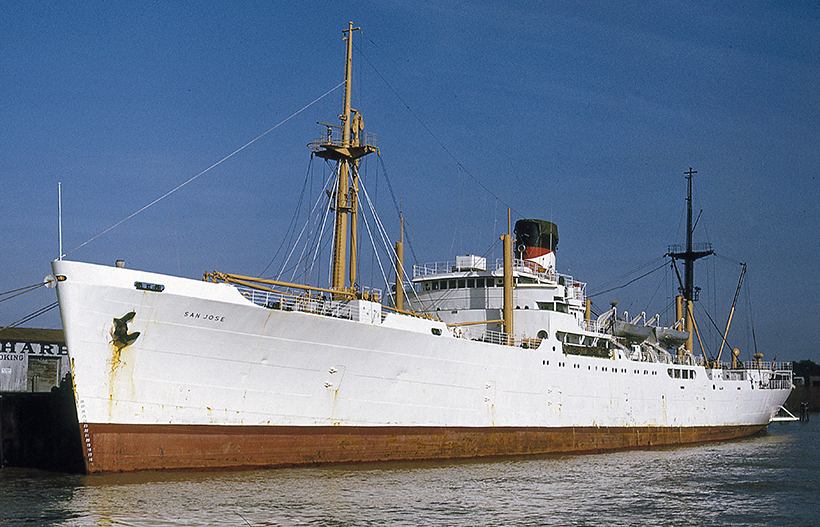
A war-built ship, the 7,074grt San Jose was completed by the Gulf Shipbuilding Corp at Chickasaw, Alabama in 1945 for United Fruit’s United Mail Steam Ship Co subsidiary and sailed under the United Fruit banner until moved into the associated Fyffes fleet in 1970 and renamed Ronde. Of light draught, the ship was capable of navigating up the Hudson River as far as Albany, New York and, like her sisterships, carried 12 passengers. The steam turbine-propelled vessel was broken up by Shun Hwa Steel Co at Kaohsiung, Taiwan in 1975. (Pic: H. Stott)
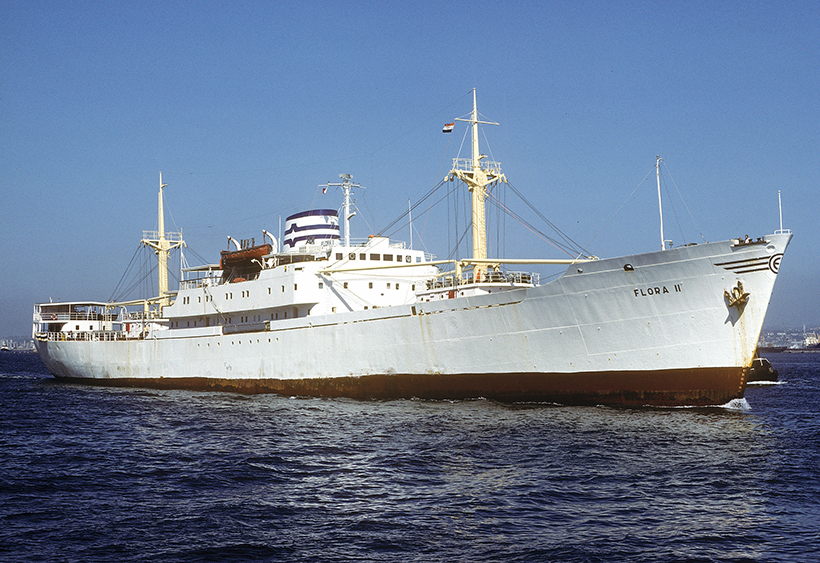
The 6,163grt Flora II was completed as North Sea in 1960 to a much more modern design than the Fyffes ships of that era by Eriksberg Mekaniska Verkstads of Gothenburg. Originally owned by Sweden’s A/B Oceankompaniet (William Thoren Rederi), the 135.3m by 17.1m vessel was powered by a Burmeister & Wain six-cylinder diesel of 6,800bhp giving a speed of 18 knots. Laid up in 1982 after trading under both the Liberian and Greek flags, the ship was sold in 1985 for demolition at Eleusis, Greece. (Pic: T Jones)

Representing reefer designs of the mid-1960s, the 6,955grt Mare Artico was completed by the Ansaldo Muggiano yard in Italy for Compagnia Marittima Bananiera Italiana (D’Amico) in 1967 as one of four sisterships (the others being Mare Antartico, Mare Australe and Mare Boreale). Renamed Banana Carrier in 1982, the 18.5-knot vessel operated several long-term charters for United Fruit and Del Monte Fresh Fruit before being broken up at Chittagong, Bangladesh in 1994. (Pic: H Stott)
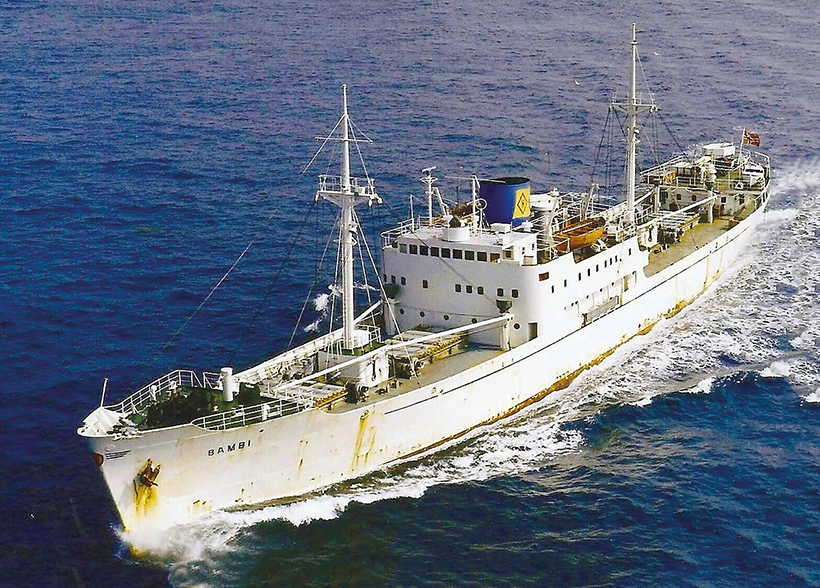
A refrigerator ship that carried many names, the 2,269grt Bambi is seen while under the ownership of Norway’s Sigurd Haavik in the late 1960s. Completed as Windward Islands by Sweden’s Eriksbergs, in 1953 for trading to the Caribbean, the ship was purchased by Fred. Olsen & Co in 1963 and renamed Bañaderos, then Bambi in 1968. Thereafter, the vessel traded as Natalie D and Hamdan before being lost in the Mediterranean in 1978 after developing a leak. (Pic: Skyphotos)
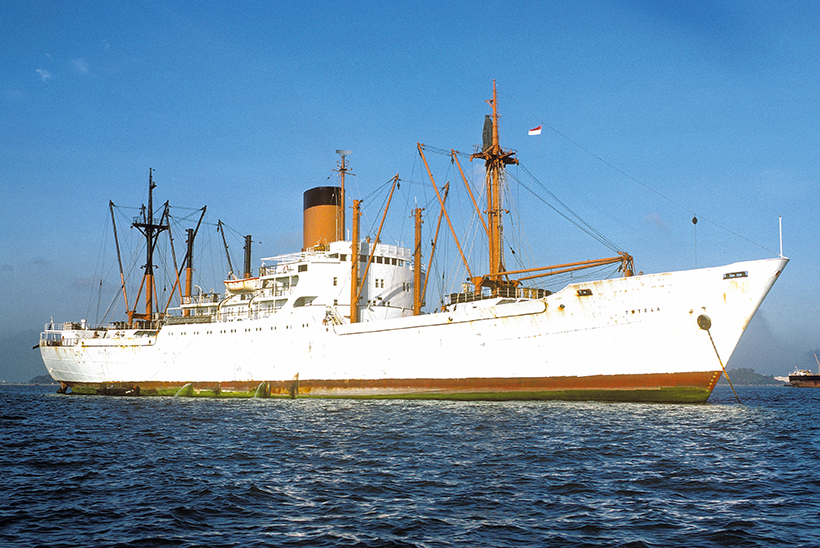
One of six T class sisterships built by Germany’s Bremer Vulkan in the early 1960s (the others being Tenadores, Turrialba, Telde, Tilapa and Tucurinca), the 6,738grt Tetela was finished to a rather traditional design for Surrey Shipping Co (Fyffes Group) and was among the last refrigerator vessels to be powered by steam turbine machinery. Later moved to United Fruit’s Empresa Hondurena de Vapores subsidiary, the 17.5-knot ship served this company until being dismantled by Taiwan’s Chien Yu Steel Industrial Co in 1979. (Pic: D Brown)
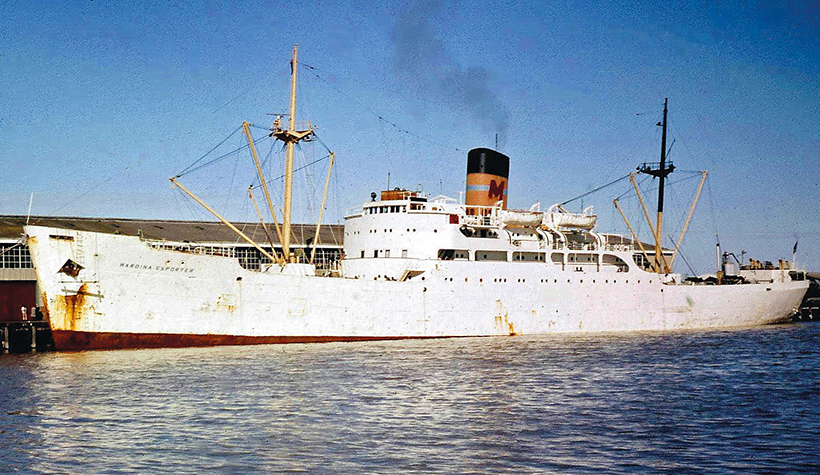
Seen in her final year of service, yet still receiving a bit of touch-up paint forward, the Greek-owned 6,283grt Mardina Exporter was completed as Chirripo in 1957 by Alexander Stephen & Sons, Govan as one of several sister ships for GB’s Fyffes Group. Propelled by steam turbine machinery, the 18-knot vessel had 200,100ft3 of refrigerated hold space as well as accommodation for 12 passengers. She operated under the name Olancho for three years prior to becoming Mardina Exporter for Piraeus-based Newport Shipping in 1972. Sisterships Chuscal and Chicanoa also joined the Greek-owned fleet, as Mardina Packer and Mardina Importer, but all were broken up by the mid-1970s. (Pic: M CORNWALL/C HOWELL COLLECTION)
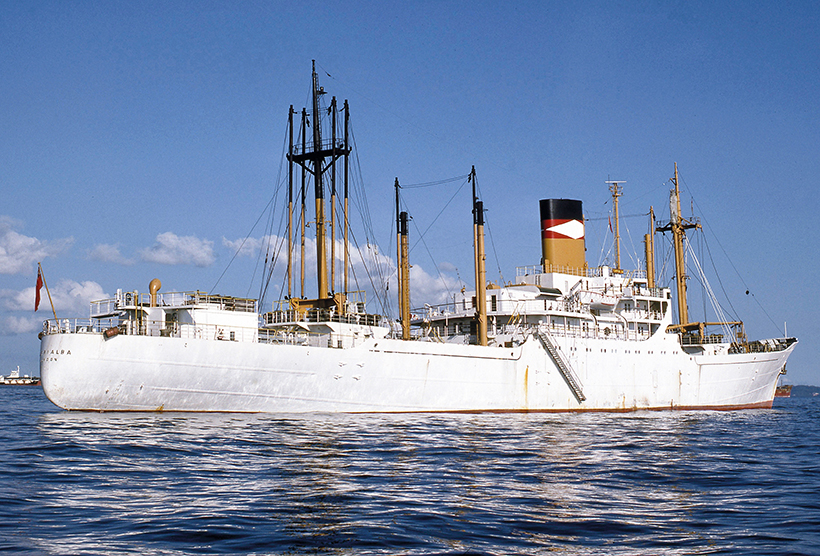
Another of the Fyffes T class, the 1960-built Turrialba made use of de Laval main propulsion turbines, all supplied by German builder Bremer Vulkan, the turbines developing 8,500shp at 120rpm. Also like her sisters, the 6,738grt ship could accommodate 12 passengers in deluxe cabins located midships. To be graced with a Chiquita brand logo on her sides by the 1970s, the vessel remained in service until scrapped at Kaohsiung in 1980. (Pic: D Brown)
This feature comes from the latest issue of Ships Monthly, and you can get a money-saving subscription to the magazine simply by clicking HERE

Previous Post
Win a Massey Ferguson Type 35 Deluxe!

Next Post
The Historical Construction Equipment Association’s convention



